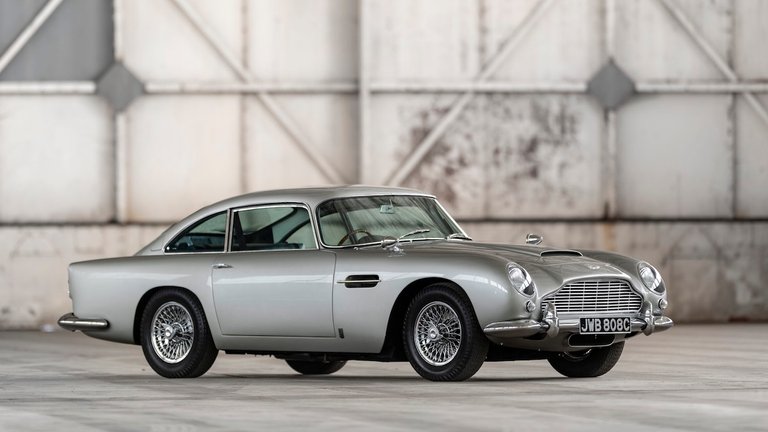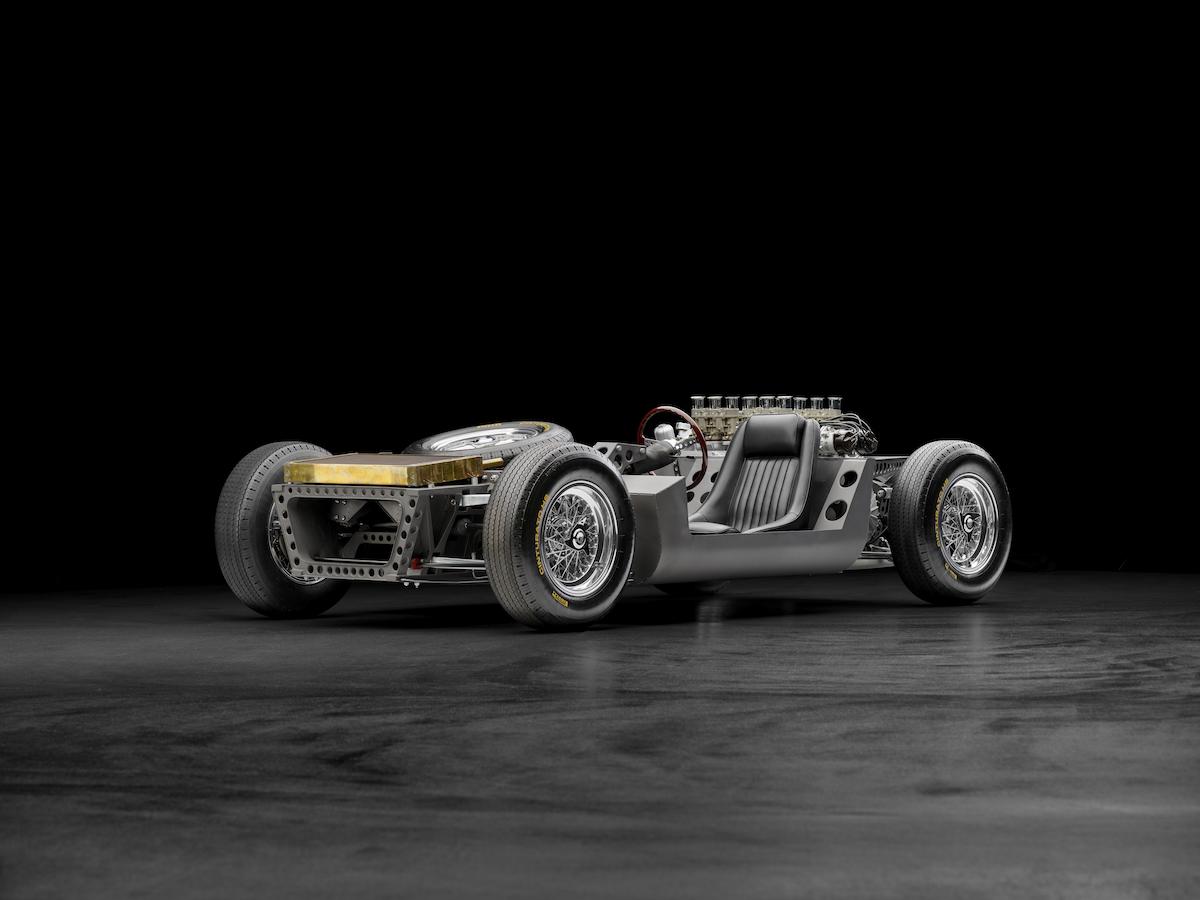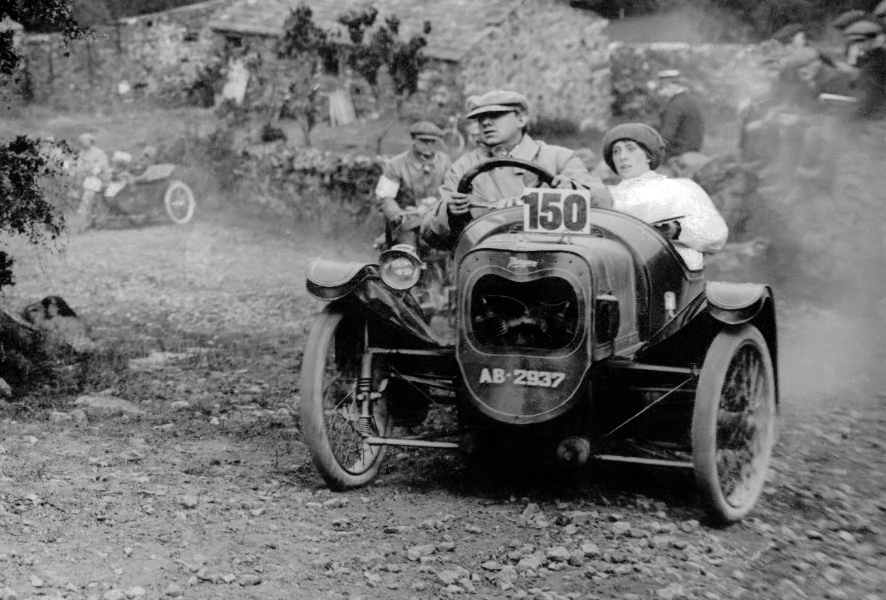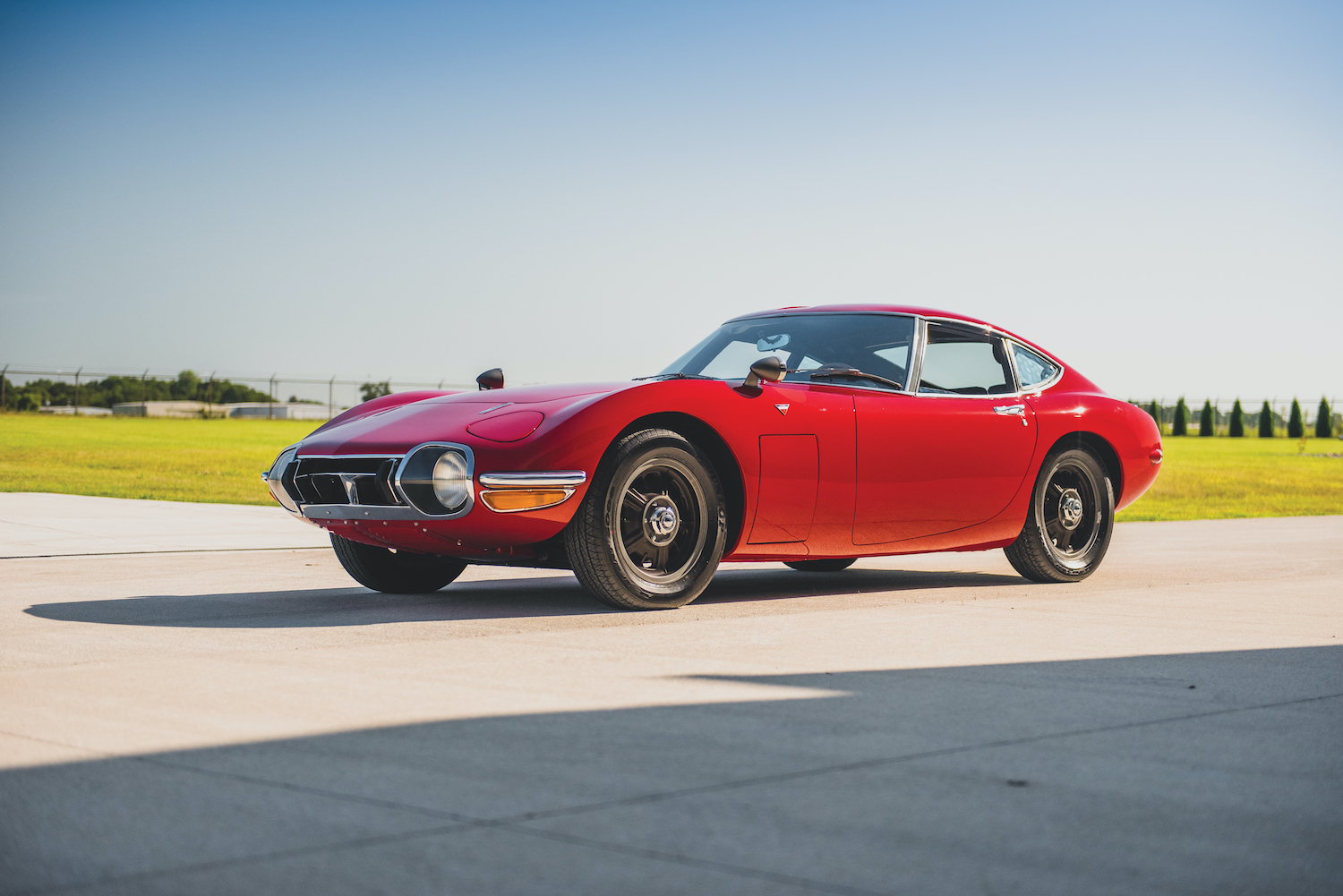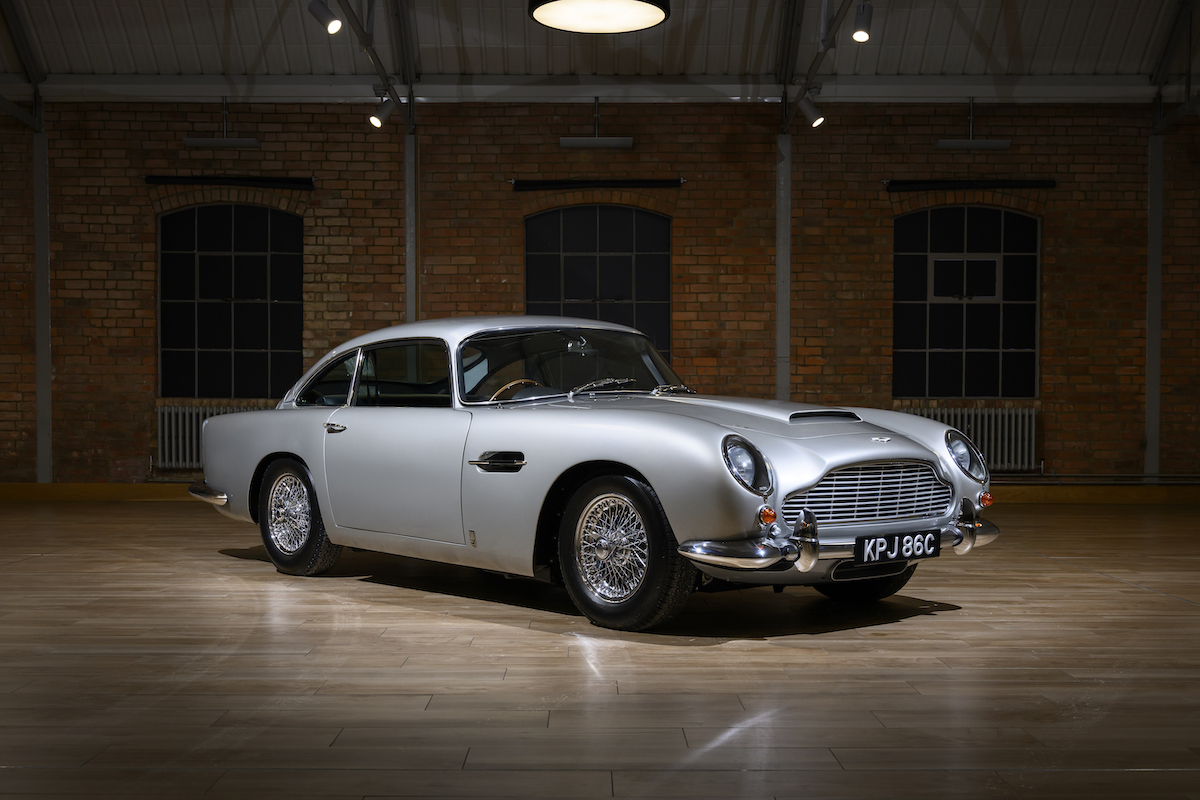The DB5’s association with the James Bond film franchise propelled the luxury grand tourer to automotive immortality
The Aston Martin DB5 was built in tiny numbers compared to its contemporary British rival the Jaguar E-Type, but its enduring association with one of the most successful film franchises in history helped propel the luxury grand tourer coupe to cinematic and automotive immortality.
The Aston Martin DB5 is the biggest-selling car of its type in history. Huh?
Big sales numbers and Aston Martin are rarely mentioned in the same sentence, least of all when referring to anything from the era of tractor-building and money-burning enthusiast David Brown’s ownership (1947-72).
But thanks to another Englishman, named Bond – James Bond – the DB5 has sold more than seven million Corgi model cars, making it still the world’s biggest selling toy car.
The story of how the famous British sports car marque came about can be traced to the partnership formed in 1913 between Lionel Martin and engineer Robert Bamford. Both men were keen racers of Singer-based specials, a passion that led them to the idea of building their own cars under the Bamford & Martin nameplate.

The DB5 has become synonymous with James Bond, first featuring in 1964’s Goldfinger
It was the combination of a notable victory in 1914 at the Aston Clinton hill climb, and a suggestion from Lionel Martin’s wife Kate who saw the advantage of the ‘Aston’ prefix in lifting the brand in alphabetical listings of car makers, that prompted the change of name to Aston-Martin.
This first iteration of Aston-Martin built only 60-odd cars before going into receivership (and losing the hyphen) in 1925. It would certainly not be the last time.
The ‘DB’ series and a concerted sports-car racing effort began with David Brown’s ownership, and by the time of the all-new, Carrozzeria Touring-bodied DB4 road car of 1958, the marque was already a regular class winner at Le Mans. Its DBR1 racers would finish 1-2 outright in 1959.
The DB4 introduced a clean-sheet chassis for Aston, employing Touring’s superleggera (superlight) technique of a framework of small-diameter steel tubes wrapped in sheet magnesium-alloy. Front suspension was by wishbones with coils, the rear via a live axle with trailing arms, Watts linkage and coils. Brakes were all disc.
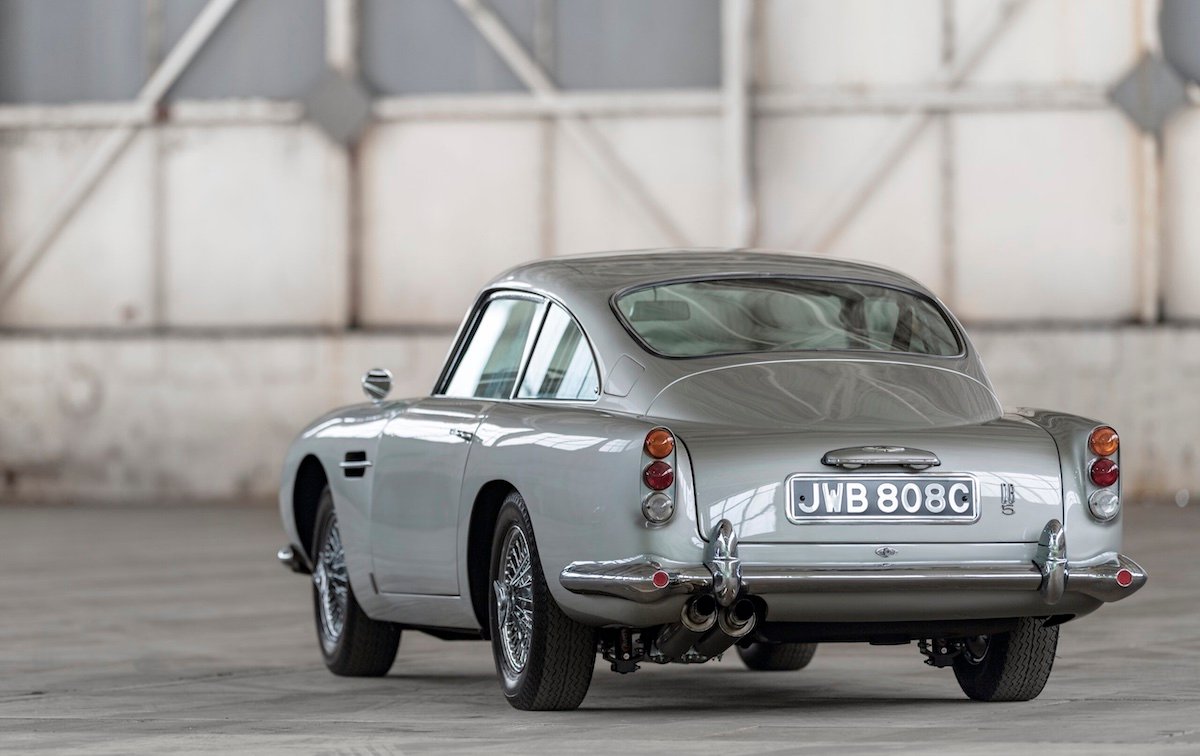
With its predecessor, the DB4, undergoing many evolutions and updates during its lifespan, the DB5 was indeed little more than a facelift of the final DB4 Series V
The DB4 also marked the debut of Aston’s long-serving, DOHC six-cylinder engine, designed by Polish engineer Marek Tadek in 1957, and installed in both the DB4 (3.7-litres) and the DBR2 racer (in a range of capacities).
The DB4 underwent five evolutions during its life. Indeed, the DB5 that superseded it in 1963 was little more than a facelift of the final DB4 Series V, which had introduced a 90mm longer body and faired-in headlights.
For the DB5, the six-pot engine was enlarged to 3995cc, producing 210kW at 5500rpm and 382Nm at 3850rpm. The triple Weber-carbed DB5 Vantage upped the ante to 235kW/393Nm. It drove through a five-speed gearbox.
With Aston now firmly on Ferrari shoppers’ lists, the DB5 flattered with an abundance of luxury equipment, including full leather interior, reclining seats, plush English carpet and tinted electric windows. Cockpit-adjustable Armstrong ‘Selectaride’ dampers were also an option.
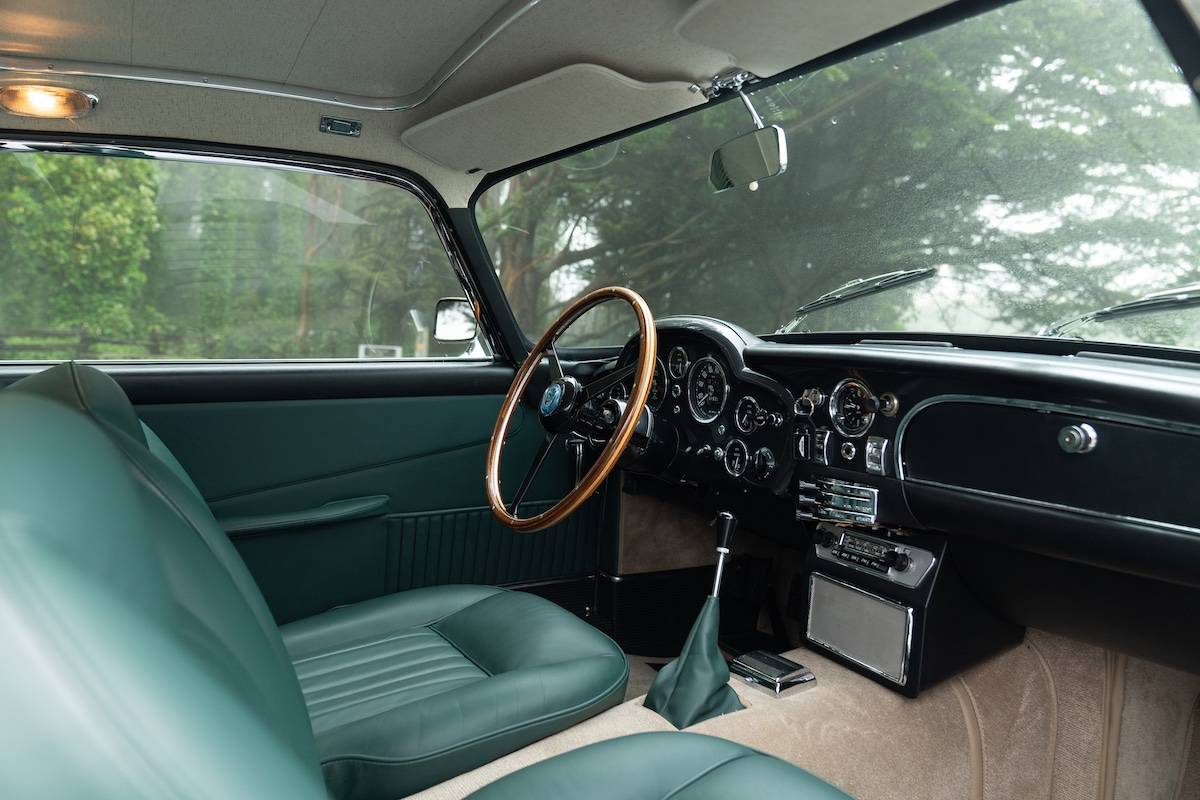
An abundantly equipped full-leather interior omplimented the DB5’s iconic bodywork
Even Beatle Paul McCartney’s DB5 chassis 1653/R, ordered in 1964, was specified with a Philips Auto-Mignon under-dash record player.
The standard luxury spec somewhat countered the DB5’s lightweight body construction, adding up to a 1346kg kerb weight.
The DB5 wasn’t just a looker: it offered a top speed north of 225km/h and 0-100km/h acceleration in around eight seconds. But the Aston’s elegance, athleticism and expense had already been put into context by the Jaguar E-Type, which also offered fabulously phallic styling and similar performance, at literally half the price.
There again, while Jaguar built more than 70,000 E-Types over 14 years, Aston Martin built precisely 1021 DB5s between 1963 and ’65, which included 65 up-spec Vantage coupes (from 1964), 123 convertibles and 13 ‘shooting brake’ wagons. Not to forget, one hastily facelifted Silver Birch DB4 development mule, whose very particular options pack rocketed the DB5 to cinematic and automotive immortality.
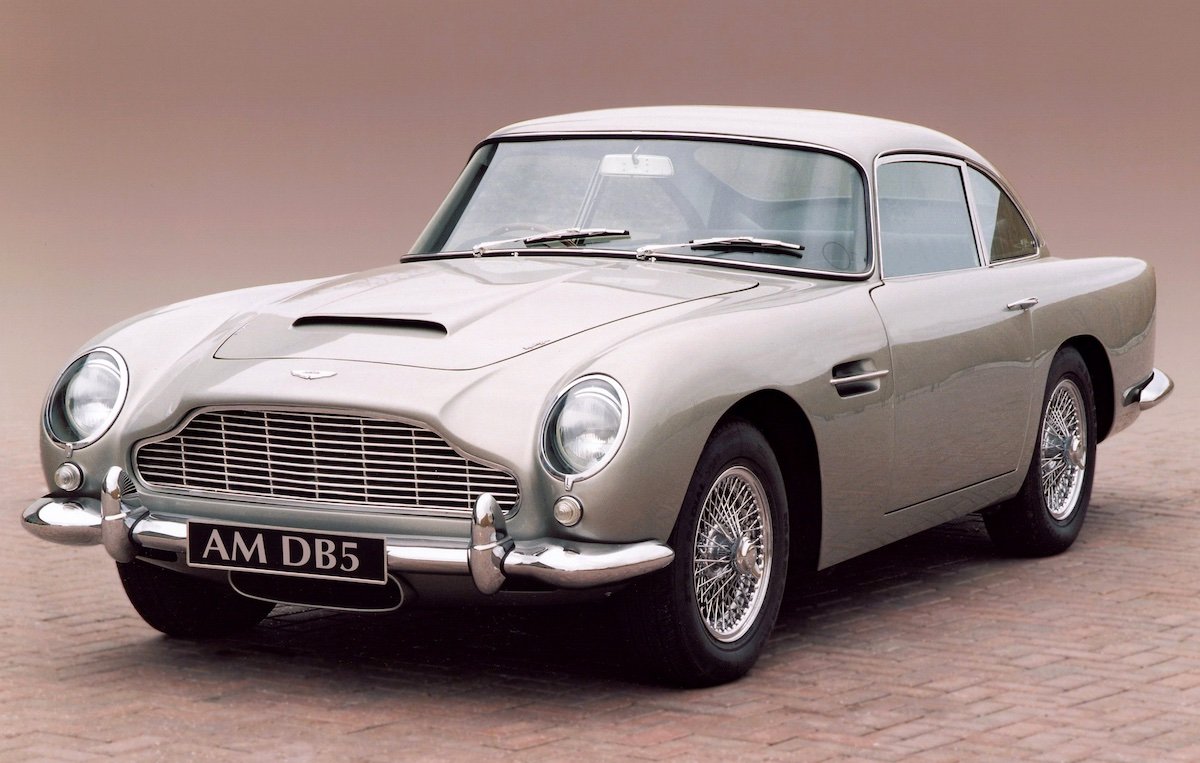
Only 1021 examples of the DB5 were produced during its short run, compared to more than 70,000 examples of the more affordable Jaguar E-Type

